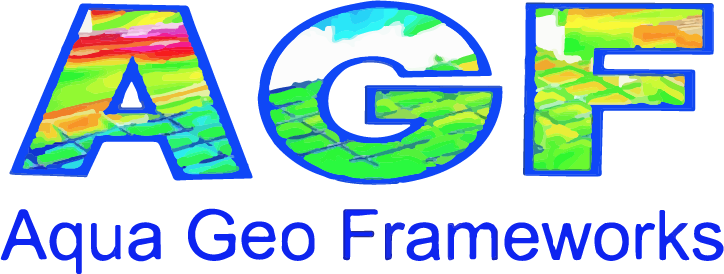AGF Connects The Dots
Real World Example
Tylr Naprstek of the Lower Loup NRD explains the process they used with AGF to connect the dots and fill in the blanks.
“What AGF and AEM has allowed us to do, is correct some of that assumption by following the lines. . . . We have created a need for more and better data and this refined tool with AEM (Airborne Electromagnetic) is allowing us to fill in the blanks.” -Tylr Naprstek
The Process
Review Existing Data
AGF gathers existing, publicly available, geological and geophysical reports and borehole geophysical and lithological logs within the area of interest in order to develop a conceptual site model. In addition, the clients provide geological reports, borehole logs, and water quality data that may not be publicly available that are integrated into the conceptual site model. Then forward/inverse modelling is performed using the borehole logs to determine if AEM is an appropriate tool for characterizing the area of interest. Additionally, an AEM system is selected based on the forward/inverse model performance and the estimated ability to image the desired target.
Create Flight Plan and Fly the Survey
The layout of the subsurface geology and aquifer units are considered as a preliminary flight plan is developed based on the client’s area of interest and objectives for the AEM survey. Once the flight plans are optimized by taking into consideration local roads and infrastructure, they are used to develop a data acquisition plan and schedule. During AEM data acquisition quality assurance/quality control (QA/QC) protocols are performed on the acquired daily data in order to ensure that high quality data is acquired and available for modeling and then interpretation. During AEM data acquisition, preliminary laterally-constrained inversion results, including lithological and geophysical borehole logs for ground-truth, are provided as 2D profiles, usually within 24-36 hours of acquisition. This “model space” QA/QC is critical to determine system performance and calibration during acquisition.
Data Inversion Process
Six to eight weeks after data acquisition is complete, when the final data is available, the data are automatically filtered and then manually edited to remove noisy data due to infrastructure. Then several iterations of spatially-constrained inversions are performed on the data in order to provide the best results for interpretation of the AEM survey data. Each of these iterations of the inversion are checked against the geological maps, hydrogeological assessments, lithological logs, water quality samples, and geophysical borehole logs for ground-truth.
Create Maps and Reports
Once the final inversions are complete, 2D profiles and surfaces and then 3D models, including Fence Diagrams and Voxels, are developed upon which the interpretation is based. A selection of, or combination of, stratigraphic boundaries, hydrostratigraphic boundaries, aquifer material properties, water quality, and estimated specific yield and storage volumes are interpreted specific to the project. All these results, plus a detailed description of the data acquisition process, are combined into a detailed and descriptive report. Included in the data delivery are the acquired raw data, the processed data, the AGF inverted data, 2D resistivity and interpretive profiles and surfaces, 3D images (fence diagrams and voxels), 3D models, interpretative Google Earth KMZs, and ESRI map project package files.




